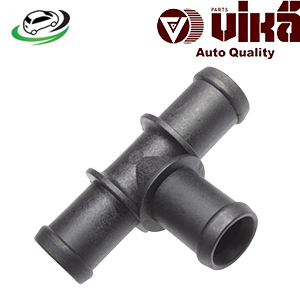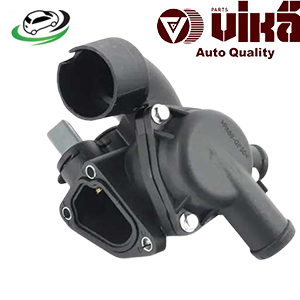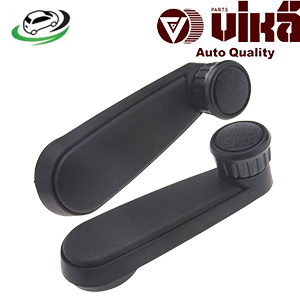-38%
Get VW Golf GTI/ Jetta Base/ Jetta GLI 16-Valve/ Golf Base Window Crank Handle 191837581
The window crank handle is a traditional mechanical component used in automobiles to manually operate car windows. Before the advent of modern power windows, window crank handles were the primary method for raising and lowering the windows in vehicles. Even today, they can still be found in many older or economy-class vehicles, offering a simpler, more cost-effective solution compared to electric window mechanisms.
A window crank handle is typically mounted on the inside of a car door and connected to a manual window regulator. By rotating the handle, the driver or passenger can control the vertical movement of the window glass. Although its mechanism is basic, the window crank handle serves a critical role in vehicle ventilation and accessibility.
2. Structure and Design of the Window Crank Handle
The window crank handle has a straightforward design with three key components:
- Handle: The handle is the part that the user physically grips to rotate and control the movement of the window. It’s usually shaped for ergonomic use and often includes a textured surface to ensure a firm grip.
- Base: This is the hub where the handle is attached to the window regulator inside the car door. The base connects the handle to the window’s mechanical gears, which control the upward and downward motion of the window.
- Retaining Clip or Screw: The handle is secured to the window regulator using a small retaining clip or screw. This fastener ensures that the handle remains firmly attached to the regulator mechanism while in use.
Window crank handles are commonly made of:
- Plastic: Used in most budget vehicles due to its lightweight nature and low cost. Plastic handles are molded into various shapes and finishes, often with rubberized grips.
- Metal: Found in older or higher-end models, metal crank handles offer superior durability and a more classic aesthetic.
- Combination: Many handles incorporate both materials, using a metal base with a plastic grip for enhanced durability and comfort.
3. How the Window Crank Handle Works
The operation of a window crank handle is based on a simple mechanical system known as a manual window regulator. Here’s how it works:
- Rotation and Gear Engagement: When the user turns the crank handle, the handle’s rotation engages a set of gears inside the door panel, part of the window regulator mechanism. The regulator is typically a scissor-like structure connected to the window glass.
- Vertical Motion: As the crank is rotated, the gears either raise or lower the window glass. Turning the handle clockwise raises the window, while turning it counterclockwise lowers it.
- Mechanical Advantage: The gearing system provides mechanical advantage, allowing the user to raise or lower the window with relatively little effort. The gear mechanism ensures that the window remains in position, even if pressure is applied to the glass from outside.
4. Applications of the Window Crank Handle
Though manual window crank handles are being phased out in favor of electric windows, they are still widely used in certain vehicles and situations:
- Economy-Class Cars: Many lower-budget or entry-level vehicles still come equipped with manual window crank handles as they reduce production costs. These vehicles prioritize affordability over luxury, making window crank handles a practical choice.
- Commercial and Utility Vehicles: Manual crank handles are commonly used in commercial vehicles such as delivery vans, trucks, or agricultural vehicles. In these applications, reliability and ease of repair are more critical than electric convenience.
- Vintage and Classic Cars: In older vehicles, particularly those from the mid-20th century, window crank handles were the standard option. Many vintage and classic cars retain their original manual window cranks for authenticity, and enthusiasts prefer to keep these systems intact to maintain the vehicle’s originality.
5. Advantages of the Window Crank Handle
While power windows have become the modern standard, there are several advantages to using window crank handles:
- Simplicity: The manual crank handle offers a simple and straightforward mechanism for raising and lowering the window. Unlike electric systems, which can fail due to wiring issues, fuses, or motor burnout, the crank handle is purely mechanical and doesn’t require electricity.
- Reliability: Mechanical systems like window crank handles are less prone to failure compared to electric systems. There’s no risk of electrical malfunctions, and the handle itself rarely wears out. If a part of the window regulator does fail, repairs tend to be easier and cheaper than fixing electric window motors.
- Cost-Effective: Window crank handles are much cheaper to manufacture and install compared to electric window mechanisms. This is why they remain a popular choice for economy vehicles and commercial fleets.
- Ease of Maintenance and Repair: Repairing or replacing a window crank handle or its associated parts is usually straightforward. There are fewer components to troubleshoot, and parts are generally inexpensive and readily available.
- Manual Control: In the event of an electrical failure, manual crank handles allow the user to operate the windows without being dependent on the vehicle’s battery or electrical system. This feature can be particularly useful in emergencies.
6. Common Issues with Window Crank Handles
Despite their simplicity and reliability, window crank handles can encounter problems, especially in older or heavily used vehicles:
- Handle Breakage: Over time, the handle can wear out, especially if it is made from plastic. Repeated use, exposure to sunlight, and temperature fluctuations can weaken the plastic, causing it to crack or break.
- Loose Retaining Clip: The retaining clip or screw that holds the crank handle in place may become loose or dislodged, leading to a wobbly or detached handle. This can be easily fixed by re-tightening or replacing the fastener.
- Window Regulator Failure: The internal gears of the window regulator may wear out over time, making it difficult or impossible to raise or lower the window. This can result in the window becoming stuck in one position.
- Difficulty in Operation: In older vehicles, the crank mechanism may become stiff or difficult to turn due to rust, dirt accumulation, or lack of lubrication within the door panel. This can make window operation challenging and uncomfortable.
- Misalignment of the Window: Over time, the window glass may become misaligned within the door frame, making it harder to raise or lower the window smoothly. Misalignment can put extra stress on the crank handle and regulator, potentially leading to damage.
7. Maintaining and Replacing Window Crank Handles
Maintaining a window crank handle is straightforward, but a few routine practices can extend its life and ensure smooth operation:
- Regular Cleaning: Keeping the window crank handle and its surrounding area clean can prevent dirt, dust, and debris from entering the mechanism. Wiping the handle and door panel regularly ensures smooth operation.
- Lubrication: Periodically lubricating the internal gears of the window regulator can reduce wear and tear. Applying a light lubricant or grease to the regulator can help the gears move freely and prevent rust from forming.
- Inspecting for Wear: Regularly check the handle and retaining clip for signs of wear or looseness. If the handle feels wobbly or becomes difficult to turn, it may be time to tighten or replace the retaining clip or screw.
- Replacing the Handle: If the handle breaks or becomes worn, replacement is usually a quick and inexpensive process. Replacement handles are available at most auto parts stores, and installing a new handle often requires only basic tools.
- Repairing the Window Regulator: If the window becomes difficult to operate or the regulator fails, it may be necessary to open the door panel and inspect the internal components. Replacing the regulator or realigning the window can restore smooth operation.
8. Conclusion
The window crank handle may seem like a relic of the past in today’s age of power windows, but it remains an important and functional component in many vehicles. Its simplicity, reliability, and cost-effectiveness make it a viable solution for economy cars, utility vehicles, and vintage models. While the window crank handle requires occasional maintenance and may face some issues over time, it continues to be a practical and easy-to-use mechanism.
The benefits of manual control, lower maintenance costs, and fewer points of failure make the window crank handle a desirable option for those who value straightforward functionality. By understanding its operation, maintaining it properly, and addressing any problems as they arise, vehicle owners can ensure that their window crank handles remain in good working condition for years to come.
Follow us on Facebook for more parts.




Reviews
Clear filtersThere are no reviews yet.